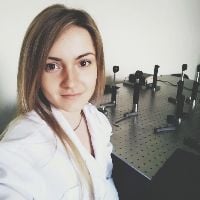Advances in Structured Light Generation and Manipulation
A special issue of Photonics (ISSN 2304-6732).
Deadline for manuscript submissions: 31 May 2024 | Viewed by 825
Special Issue Editors
Interests: laser physics; optical vortices and orbital angular momentum of light; optical fiber and polarization optics
Interests: optical vortices; spectrum of orbital angular momentum of light; vision-based measurement; computing optical imaging
Special Issue Information
Dear Colleagues,
Structured vortex light, capable of carrying a great number of degrees of freedom, finds manifold applications from the software of standard computers to quantum devices in optical communications and laser material processing systems employing both scalar and vector unique properties of light. In order to ensure the real embodiment of the structured light properties in systems and devices of modern photonics, it is required to cover a huge layer of theoretical, experimental, technical, and technological research. Over the past three decades, significant fundamental studies in vortex beam optics have been carried out, presenting new beam types and their transformation in uniform media and resistance to destruction in turbulent environments. Particular attention was paid to the technique of shaping scalar and vector structured beams by spatial light modulators, as well as metasurfaces, both for classical and quantum information processing systems.
A lot of physical and technical problems have arisen and been solved in the course of these studies, but many of them are still looking for solutions. The purpose of this Special Issue is to highlight important unresolved problems and original and unexpected approaches to solving some of them.
This Special Issue encompasses state-of-the-art articles on both theoretical and experimental studies on structured vortex beams, generation, multiplexing, and demultiplexing techniques, propagation, focusing, and measurement in uniform and turbulent media, as well as the latest applications of the structured beams. The main topics of interest of this Special Issue are included in the following sections:
Singular Optics
Fundamentals of singular optics; principles of quantum singular optics; propagation of singular beams in free space, crystals, optical fibers; optics of polarization singularities; spin–orbit interaction in laser beams; vortex–division multiplexing systems in a communication medium; optical vortices in turbulent environments; singular near-field optics; and sensors of physical quantities based on optical vortices.
Diffraction and Gratings
Vortex beams diffraction. Digital singular optics; nanophotonics and optics of nanostructures; digital signals and images processing; optical communication based on singular beams; microscopy and adaptive optics of singular beams; and biomedical and industrial applications.
Information Optics and Quantum Technologies
Mathematical techniques in the pattern recognition theory; optical techniques for obtaining and processing images; information processing based on optical vortices; geographic information technologies; information encryption, decryption, and protection, including quantum cryptography; methods of digital singular optics; hyper-spectral data analysis; numerical methods of computer optics; information technology and nanotechnology.
Coherent Optics and Photonics
Theoretical approaches of optical holography and analysis of the properties of holograms; digital image processing; new methods of holographic and speckle interferometry; speckle correlation methods; visual holography (physical and digital methods); holographic technologies in biology and medicine; application of coherent–optical methods in the diagnosis of deformations, damages and residual life; hologram optical elements; photo materials; media for hologram registration; security hologram technology; holography and education; Luminescent materials and technologies; photonics of advanced materials; spectroscopy of quantum dots and single molecules; optical properties of metamaterials.
Photonics and Laser Spectroscopy
Coherent processes of the interaction of optical radiation with matter and optical materials. Problems of theoretical and experimental laser spectroscopy of atoms, molecules, and condensed matter. Non-linear optics and laser physics. Photonics of molecular nanoclusters. Physics of lasers and laser technologies. Optics and photonics in biology and medicine.
Prof. Dr. Volyar Alexander
Dr. Bretsko Mikhail Vladimirovich
Dr. Akimova Yana Evgenievna
Guest Editors
Manuscript Submission Information
Manuscripts should be submitted online at www.mdpi.com by registering and logging in to this website. Once you are registered, click here to go to the submission form. Manuscripts can be submitted until the deadline. All submissions that pass pre-check are peer-reviewed. Accepted papers will be published continuously in the journal (as soon as accepted) and will be listed together on the special issue website. Research articles, review articles as well as short communications are invited. For planned papers, a title and short abstract (about 100 words) can be sent to the Editorial Office for announcement on this website.
Submitted manuscripts should not have been published previously, nor be under consideration for publication elsewhere (except conference proceedings papers). All manuscripts are thoroughly refereed through a single-blind peer-review process. A guide for authors and other relevant information for submission of manuscripts is available on the Instructions for Authors page. Photonics is an international peer-reviewed open access monthly journal published by MDPI.
Please visit the Instructions for Authors page before submitting a manuscript. The Article Processing Charge (APC) for publication in this open access journal is 2400 CHF (Swiss Francs). Submitted papers should be well formatted and use good English. Authors may use MDPI's English editing service prior to publication or during author revisions.
Keywords
- structured light
- tailored light
- shaped light
- structured illumination
- orbital angular momentum
- vortices
- structured polarization







